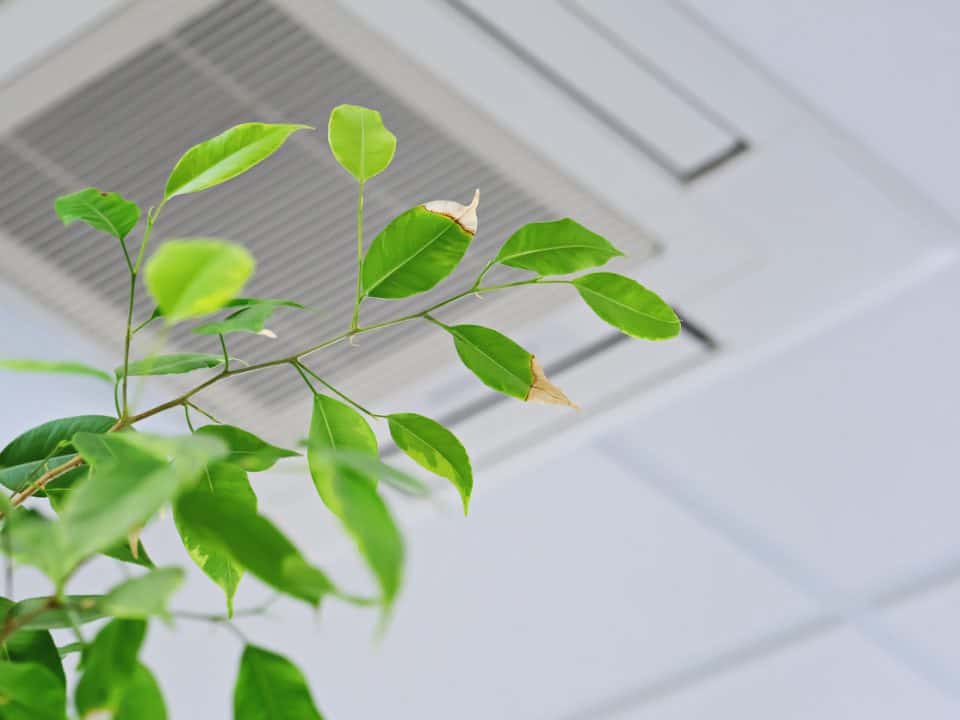
How Long Should an HVAC System Last?
February 6, 2025
Common Commercial A/C Problems and How to Prevent Them
March 6, 2025Effective air purification solutions
Indoor air quality has a profound impact on our health, particularly for those who suffer from allergies and asthma. Air purification systems provide a vital solution in managing these conditions by reducing airborne allergens and irritants, creating a healthier indoor environment.
Understanding Indoor Air Pollutants
Indoor air pollutants such as pollen, dust, pet dander, and mold can exacerbate allergic reactions and asthma symptoms. These particles are often trapped inside your home, especially when windows and doors are closed. Without proper ventilation and purification, these allergens can increase, affecting your well-being. These contaminants can be broadly categorized into three main types: allergens, VOCs, and pollutants.
Allergens
Allergens are substances that can cause allergic reactions. Common indoor allergens include dust mites, pet dander, pollen, and mold spores. These tiny particles can trigger symptoms such as sneezing, coughing, itchy eyes, and even asthma attacks.
- Dust Mites: These microscopic pests thrive in warm, humid environments and are commonly found in bedding, upholstery, and carpets.
- Pet Dander: Shed skin flakes from pets can become airborne and cause allergic reactions.
- Pollen: While typically an outdoor allergen, pollen can enter buildings through open windows and doors.
- Mold Spores: Mold can grow in damp areas of your home and business, such as bathrooms, basements, and kitchens, releasing spores into the air.
Volatile Organic Compounds (VOCs)
VOCs are organic chemicals that easily evaporate at room temperature. They are commonly found in household products and can have both short-term and long-term health effects.
- Sources of VOCs: Paints, varnishes, cleaning supplies, air fresheners, and building materials.
- Health Effects: Short-term exposure to VOCs can cause headaches, dizziness, and throat irritation. Long-term exposure can lead to more severe health issues such as liver and kidney damage or even cancer.
Pollutants
Pollutants encompass a wide range of harmful substances, including particulate matter (PM), carbon monoxide (CO), and radon. These contaminants can originate from both indoor and outdoor sources.
- Particulate Matter (PM): PM includes dust, dirt, soot, and smoke particles that are small enough to be inhaled. These particles can cause respiratory issues and cardiovascular problems.
- Carbon Monoxide (CO): This colorless, odorless gas is produced by the incomplete combustion of fossil fuels. High levels of CO can be fatal.
- Radon: A naturally occurring radioactive gas that can seep into buildings from the ground. Long-term exposure to radon is a leading cause of lung cancer.
The Role of Air Purifiers
Air purifiers are designed to filter out these unwanted particles, leaving the air cleaner and fresher. Advanced filtration technologies are particularly effective in capturing microscopic particles that traditional filters may miss. By investing in a high-quality air purifier, you can significantly reduce the triggers for allergies and asthma, leading to improved respiratory health.
Choosing the Right Air Purification System
When selecting an air purification system, consider factors such as the size of your property, the specific allergens most prevalent in your area, and any existing HVAC system you may have. Our team in Raleigh is equipped to help you choose and install the right system tailored to your needs.
Additional Tips for Allergies and Asthma Relief: How Your HVAC System Can Help
Beyond air purifiers, your HVAC system can significantly reduce indoor allergens and improve air quality. Here’s how:
- Quality Air Filters: Investing in Merv 11 to Merv 13 air filters can capture tiny particles, including pollen, mold spores, and dust mites. However, consult with your HVAC provider to be sure what rating your system is designed for!
- Regular Filter Replacement: Ensure that your filters are changed regularly, especially during peak allergy seasons, to maintain optimal performance.
- Dehumidifiers and Humidifiers: Proper humidity levels can inhibit the growth of mold and dust mites. A whole-house dehumidifier can maintain ideal indoor humidity levels. If the air becomes too dry, which can also exacerbate allergies, a humidifier can help maintain a balance.
- Duct Cleaning: Over time, dust, mold, and other allergens can accumulate in your ducts. Regular duct cleaning can prevent these contaminants from circulating through your home.
- Ventilation: Proper ventilation is crucial. Energy recovery ventilators (ERVs) and heat recovery ventilators (HRVs) can help bring fresh air into your home while exhausting stale air, reducing the concentration of indoor pollutants.
To ensure your HVAC system provides maximum allergy relief, consider the following maintenance tips:
- Schedule Regular HVAC Inspections: Have your system inspected and serviced by a professional at least twice a year to ensure it’s running efficiently.
- Clean Around Outdoor Units: Keep the area around your outdoor units free of leaves, pollen, and other debris.
- Check for Leaks: Ensure there are no leaks in your ducts that could introduce allergens into your space.
- Upgrade Your Thermostat: Consider a smart thermostat that can monitor and adjust humidity levels automatically.
Improve Air Quality with CCS HVAC Solutions
Enhancing your property’s air quality is a proactive step towards managing allergies and asthma, providing you and others in your home or business with much-needed relief. At our HVAC company in Raleigh, we’re committed to helping you create a pollution-free sanctuary. Contact us today to explore your air purification options and breathe easier tomorrow.


